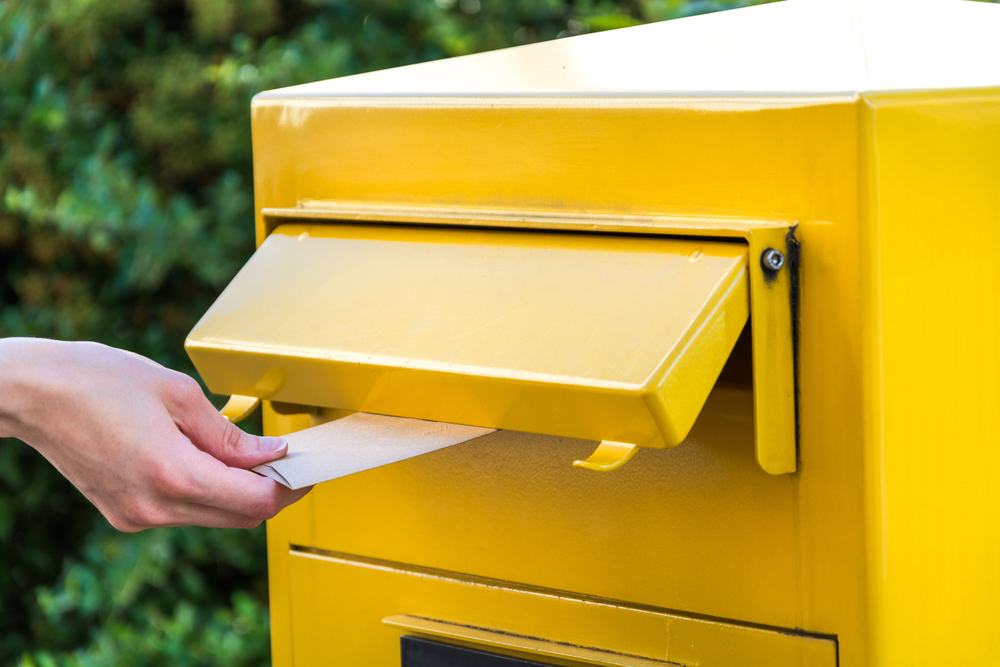Which stamp for which letter?
In the next blog post, we would like to indicate which stamp you need for which email, so that in the future You can send your emails correctly without leaving your office or home. This will save you the trip to the post office once you have bought stamps in advance.

Which stamp do I need?
In general, the postage of a postcard / letter depends on the size, weight and type of the letter to be sent. The following list only refers to shipments within Germany. Different prices apply to letters sent abroad.

Postage stamp for postcard
A standard postcard in DIN A6 format must be franked with a € 0.60 postage stamp. Make sure that the stamp is placed above the recipient’s address, in the upper right corner, on the same side as your message and not on the front. In order for the franking with a 60-cent stamp to be sufficient, the postcard must not exceed a length of 23.5 cm and a width of a maximum of 12.5 cm.
Postage stamp for standard letters
A shipment that fits into a DIN long or C6 / C5 envelope counts as a standard letter. Like the postcard, it measures a maximum of 23.5 cm x 12.5 cm. Under a weight of 20 g and up to a thickness of 0.5 cm, a € 0.80 stamp is sufficient for franking.
This corresponds, for example, to a mailing of three folded A4 pages.

Stamp for compact letters
If you have to send more than three pages, we recommend a € 0.95 stamp. You can also use DIN long or C6 / C5 envelopes, which weigh up to 50 g and can measure up to 1 cm in thickness.
Postage stamp for large letters
A large letter traditionally counts as a shipment in an envelope in envelope format C4. But the dimensions are relatively flexible here, as long as the length does not exceed 35.5 cm and the width 25 cm. The maximum thickness is 2 cm. If your letter does not weigh more than 500 g, a postage stamp of 1.55 € is sufficient. This allows you to send an average of 95 unfolded A4 pages.
Postage stamp for maxi letter
A maxi letter is a large letter that is more than 2 cm thick (but not more than 5 cm) and weighs up to 1,000 g. For this you need a postage stamp with a value of € 2.70 and you can send up to 190 unfolded A4 pages.
If your desired shipment exceeds this size or weight limit, you can either split it up and send it in several letters, or you have to send a package, for which other requirements apply.
By the way, it doesn’t matter how many stamps you stick on a letter, as long as the sum of the individual stamps equals the corresponding value. For example, you can not only frank your maxi letter with one € 2.70 postage stamp, but also with three € 0.60 postage stamps and one € 0.95 postage stamp (3 x 0.60 + 0.95 = 2.75) . Adding too much postage is of course not a problem, Swiss Post will be happy to see it. The combination of several stamps is useful if you have small quantities of stamps available in stock but need to send a large letter or maxi letter. This method is also recommended if you still have stamps from before the price increase, such as the € 0.70 stamp.
Now that you have an overview of how much a postage stamp costs for the corresponding letter formats and how to frank them correctly, we are devoting ourselves to frequently asked questions about postage stamps.
What is a registered mail?
Registered mail enables particularly secure shipping through proof of delivery. It is recorded exactly when and where you sent the shipment and when the shipment was delivered. It is also documented who receives your shipment, with a signature on delivery.
Sending by registered mail is particularly useful when important documents or documents are being sent, e.g. official documents, objections, time-bound declarations and terminations.
What do you mean by “Please clear if you have a stamp at hand”?
Have you ever held an envelope in your hands that said “Please clear if you have a stamp on hand” and wondered what that meant?
The sender would like to thank you if you affix the corresponding postage stamp, but you are not obliged to do so and Swiss Post also delivers such items without postage. In this case, you can save yourself the postage stamp. The recipient pays the postage and the letter / postcard is guaranteed to arrive anyway. In addition to the usual sentence, the same also applies to envelopes or cards with the form “Please postage”, “Franking if stamp on hand”, “Reply card” or “Advertising reply”.

